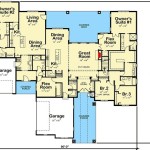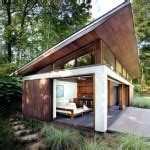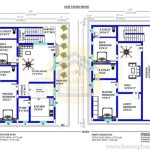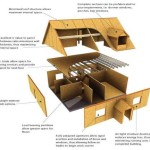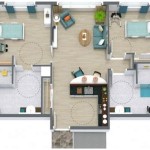A tree house plan is a detailed blueprint or set of instructions used to construct a tree house. It typically includes specifications for materials, dimensions, and assembly procedures. Tree house plans provide a roadmap for builders to ensure the safety, functionality, and structural integrity of the final product. For example, a plan might specify the type and thickness of lumber for the frame, the dimensions of the platform, the height of the railings, and the installation of windows and doors.
Tree house plans are essential for a successful build, helping to prevent costly mistakes and ensuring the safety of occupants. They also serve as a visual guide for builders, making it easier to envision the finished product and avoid any surprises during construction.
In the following sections, we will explore the key elements of a tree house plan, discuss the importance of site selection and tree assessment, and provide tips for choosing the right plan for your project.
A well-defined tree house plan is crucial for a successful build. Here are eight important points to consider:
- Site selection
- Tree assessment
- Materials list
- Structural design
- Platform dimensions
- Roof design
- Access method
- Safety features
By carefully considering these elements, you can create a tree house plan that is both safe and enjoyable.
Site selection
Choosing the right site for your tree house is essential for ensuring its safety and longevity. Here are some key factors to consider when selecting a site:
- Tree health: The tree you choose should be healthy and structurally sound. Look for trees with strong, deep roots and a well-balanced canopy. Avoid trees with any signs of disease, decay, or insect infestation.
- Tree species: Some tree species are better suited for tree houses than others. Deciduous trees, such as oak, maple, and beech, are generally good choices because they have strong branches and dense foliage. Coniferous trees, such as pine and fir, are not as well-suited for tree houses because their branches are more brittle and their foliage is less dense.
- Tree size and shape: The size and shape of the tree will determine the size and shape of your tree house. Make sure to choose a tree that is large enough to support the weight of your tree house and that has a shape that will allow you to build a stable and safe structure.
- Location: The location of the tree house is also important. Consider factors such as sunlight, wind exposure, and access to utilities. You will also want to choose a location that is convenient for you and your family.
Once you have considered all of these factors, you can start to narrow down your choices. It is a good idea to consult with a qualified arborist to get their professional opinion on the best tree for your tree house.
In addition to the factors listed above, you should also consider the following when selecting a site for your tree house:
- Sunlight: Tree houses that are exposed to sunlight will be more comfortable to use during the day. However, you may want to choose a site that is partially shaded if you plan to use your tree house in the evening or on hot days.
- Wind exposure: Tree houses that are exposed to strong winds may be more likely to sway or even collapse. Choose a site that is protected from the wind, or consider building a windbreak around your tree house.
- Access to utilities: If you plan to install electricity or running water in your tree house, you will need to choose a site that is close to these utilities. You may also want to consider the cost of running these utilities to your tree house.
Tree assessment
Once you have selected a site for your tree house, it is important to have the tree assessed by a qualified arborist. An arborist can evaluate the tree’s health, structure, and suitability for supporting a tree house.
- Tree health: The arborist will look for signs of disease, decay, or insect infestation. They will also assess the tree’s overall health and vigor.
- Tree structure: The arborist will examine the tree’s branching structure and root system. They will look for any weak or damaged branches or roots that could pose a hazard.
- Tree suitability: The arborist will determine whether the tree is suitable for supporting a tree house. They will consider the tree’s size, shape, and species. They will also assess the tree’s location and exposure to wind and other elements.
- Tree protection: The arborist may also make recommendations on how to protect the tree during and after construction. This may include measures to minimize damage to the tree’s roots, trunk, and branches.
The arborist’s assessment will help you to make an informed decision about whether or not to build a tree house in the selected tree. It will also provide you with valuable information on how to build the tree house safely and in a way that minimizes damage to the tree.
Materials list
The materials list for your tree house plan will vary depending on the size and complexity of your project. However, there are some basic materials that you will need for any tree house build:
- Lumber: The most common type of lumber used for tree houses is pressure-treated pine. Pressure-treated pine is resistant to rot and decay, making it ideal for outdoor use. You will need to choose the right size and thickness of lumber for your project. For example, you will need thicker lumber for the frame of your tree house than you will need for the walls and roof.
- Plywood: Plywood is a good choice for the walls and roof of your tree house. Plywood is strong and durable, and it is also relatively lightweight. You can choose from a variety of plywood thicknesses, depending on the needs of your project.
- Roofing: There are a variety of roofing materials that you can use for your tree house. Some popular options include asphalt shingles, metal roofing, and wood shakes. The type of roofing material you choose will depend on your budget and the style of your tree house.
- Hardware: You will need a variety of hardware to build your tree house, such as nails, screws, bolts, and brackets. Choose hardware that is made of galvanized steel or stainless steel to resist rust and corrosion.
In addition to the basic materials listed above, you may also need other materials, such as:
- Windows and doors: You may want to install windows and doors in your tree house to provide ventilation and access. You can choose from a variety of window and door styles, depending on your needs and budget.
- Insulation: If you plan to use your tree house year-round, you may want to insulate the walls and roof. Insulation will help to keep your tree house warm in the winter and cool in the summer.
- Electrical wiring: If you plan to install electricity in your tree house, you will need to purchase electrical wiring and other electrical components.
- Plumbing: If you plan to install plumbing in your tree house, you will need to purchase plumbing pipes and fixtures.
Once you have gathered all of the necessary materials, you can begin building your tree house. Be sure to follow the instructions in your tree house plan carefully to ensure a safe and successful build.
Here are some additional tips for choosing materials for your tree house:
- Use high-quality materials that are designed for outdoor use.
- Choose materials that are strong and durable.
- Choose materials that are resistant to rot and decay.
- Choose materials that are lightweight and easy to work with.
- Choose materials that are within your budget.
Structural design
The structural design of your tree house is one of the most important aspects of your project. The structural design will determine the strength, stability, and safety of your tree house. Here are some key points to consider when designing the structure of your tree house:
- Tree attachment: The way in which your tree house is attached to the tree is critical to its safety and stability. There are a variety of different tree attachment methods, so it is important to choose one that is appropriate for the size and species of your tree. For example, you may use bolts to attach your tree house to the tree, or you may use a system of cables and straps.
- Platform framing: The platform framing is the framework that supports the floor of your tree house. The platform framing should be made of strong and durable materials, such as pressure-treated lumber. The platform framing should also be designed to distribute the weight of your tree house evenly across the tree.
- Wall framing: The wall framing is the framework that supports the walls of your tree house. The wall framing should be made of strong and durable materials, such as pressure-treated lumber. The wall framing should also be designed to withstand wind and other environmental forces.
- Roof framing: The roof framing is the framework that supports the roof of your tree house. The roof framing should be made of strong and durable materials, such as pressure-treated lumber. The roof framing should also be designed to withstand wind and other environmental forces.
In addition to these key points, you should also consider the following when designing the structure of your tree house:
- Wind resistance: Your tree house should be designed to withstand wind loads. This is especially important if you live in an area that is prone to high winds.
- Snow load: If you live in an area that receives snow, you need to design your tree house to withstand the weight of snow. This is especially important if you plan to use your tree house during the winter months.
- Seismic activity: If you live in an area that is prone to earthquakes, you need to design your tree house to withstand seismic activity. This is especially important if you live in a high-risk seismic zone.
By carefully considering all of these factors, you can design a tree house that is safe, stable, and durable.
Platform dimensions
The platform dimensions of your tree house are important for determining the size and layout of your tree house. The platform dimensions will also affect the strength and stability of your tree house. Here are some key points to consider when determining the platform dimensions:
- Tree size: The size of the tree will determine the maximum size of your tree house platform. You need to make sure that the platform is large enough to accommodate your needs, but not so large that it puts too much stress on the tree.
- Tree species: The species of tree will also affect the platform dimensions. Some tree species, such as oak and maple, have strong branches that can support a larger platform. Other tree species, such as pine and fir, have weaker branches that can only support a smaller platform.
- Number of occupants: The number of people who will be using the tree house will also affect the platform dimensions. You need to make sure that the platform is large enough to accommodate the maximum number of occupants.
- Intended use: The intended use of the tree house will also affect the platform dimensions. If you plan to use the tree house for storage, you will need a smaller platform than if you plan to use the tree house for entertaining.
Once you have considered all of these factors, you can start to determine the platform dimensions. The platform should be at least 4 feet wide and 6 feet long. However, you may want to make the platform larger if you plan to use the tree house for entertaining or if you want to have more space for storage.
It is important to note that the platform dimensions are just one part of the overall tree house design. You also need to consider the structural design, the materials list, and the tree assessment when planning your tree house.
Roof design
The roof design of your tree house is important for protecting your tree house from the elements. The roof design will also affect the overall look and feel of your tree house.
- Roof shape: The shape of the roof will affect the overall look of your tree house. You can choose from a variety of roof shapes, such as gable roofs, hip roofs, and shed roofs.
- Roof pitch: The pitch of the roof is the angle of the roof. The pitch of the roof will affect the amount of runoff and the overall look of your tree house.
- Roofing material: There are a variety of roofing materials that you can use for your tree house. Some popular options include asphalt shingles, metal roofing, and wood shakes.
- Roof insulation: If you plan to use your tree house year-round, you may want to insulate the roof. Insulation will help to keep your tree house warm in the winter and cool in the summer.
In addition to these key points, you should also consider the following when designing the roof of your tree house:
- Wind resistance: Your tree house roof should be designed to withstand wind loads. This is especially important if you live in an area that is prone to high winds.
- Snow load: If you live in an area that receives snow, you need to design your tree house roof to withstand the weight of snow. This is especially important if you plan to use your tree house during the winter months.
By carefully considering all of these factors, you can design a tree house roof that is strong, durable, and weather-resistant.
Access method
The access method is an important consideration for any tree house plan. The access method will determine how you get into and out of your tree house. There are a variety of access methods to choose from, each with its own advantages and disadvantages.
- Ladder: A ladder is the most common access method for tree houses. Ladders are simple to install and relatively inexpensive. However, ladders can be difficult to climb, especially for young children or people with disabilities. Additionally, ladders can be dangerous if they are not properly secured.
- Stairs: Stairs are a more comfortable and safer access method than ladders. However, stairs are also more difficult to install and more expensive than ladders. Additionally, stairs take up more space than ladders.
- Ramp: A ramp is a good access method for people with disabilities or for tree houses that are located on a slope. However, ramps are also more difficult to install and more expensive than ladders or stairs. Additionally, ramps take up more space than ladders or stairs.
- Bridge: A bridge is a good access method for tree houses that are located far from the trunk of the tree. However, bridges are also more difficult to install and more expensive than ladders, stairs, or ramps. Additionally, bridges can be dangerous if they are not properly secured.
When choosing an access method for your tree house, it is important to consider the following factors:
- The height of your tree house
- The age and ability of the people who will be using the tree house
- The amount of space you have available
- Your budget
By carefully considering all of these factors, you can choose the best access method for your tree house.
Safety features
Safety should be a top priority when designing and building a tree house. Here are some important safety features to consider:
- Guardrails: Guardrails are essential for preventing falls from the platform of your tree house. Guardrails should be at least 3 feet high and should be made of strong and durable materials, such as pressure-treated lumber or metal.
- Ladders and stairs: Ladders and stairs should be sturdy and well-maintained. Ladders should have non-slip rungs and should be secured at the top and bottom. Stairs should have railings on both sides and should be designed to prevent tripping.
- Electrical safety: If you plan to install electricity in your tree house, it is important to do so safely. All electrical wiring should be installed by a qualified electrician and should be in accordance with local building codes.
- Fire safety: Tree houses are at risk of fire, so it is important to take steps to prevent fires and to have a plan in place in case of a fire. Keep all flammable materials away from your tree house and install a smoke detector and fire extinguisher inside your tree house.
In addition to these key safety features, you should also consider the following:
- Tree health: The health of the tree is critical to the safety of your tree house. Have the tree inspected by a qualified arborist before you build your tree house and regularly inspect the tree for signs of damage or disease.
- Tree location: The location of your tree house is also important for safety. Avoid building your tree house in a location where it is exposed to strong winds or other hazards.
- Supervision: Children should always be supervised when they are using a tree house. Never leave children unattended in a tree house.
By carefully considering all of these safety features, you can help to ensure that your tree house is a safe and enjoyable place for everyone.





:max_bytes(150000):strip_icc()/GettyImages-980431586-4febe9d7191241e2953abf9f0d10eb01.jpg)



Related Posts

